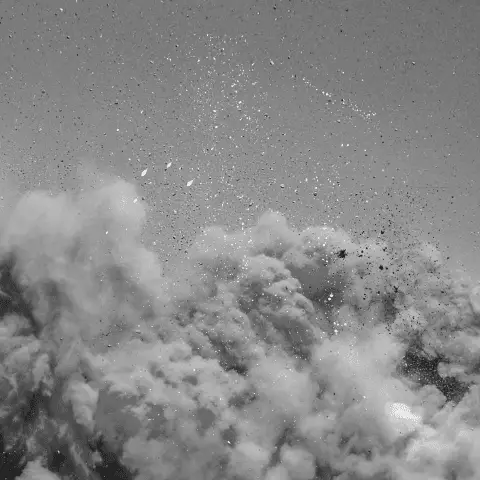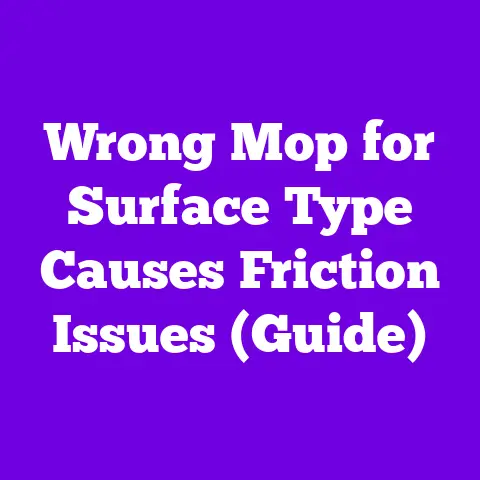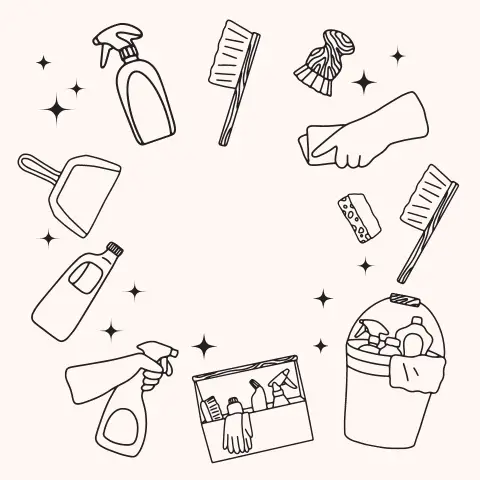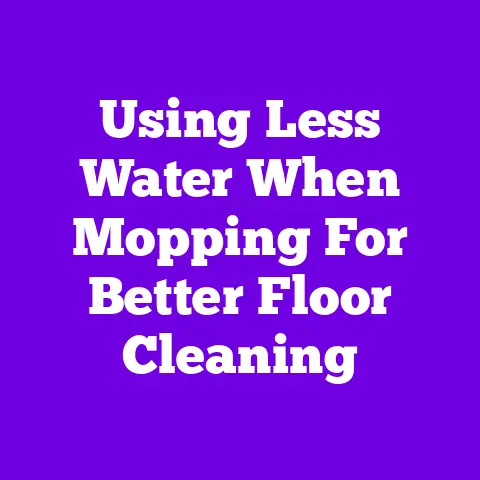Correct Way To Handle a Bucket of Dirty Mop Water (4 Ways)
To correctly handle a bucket of dirty mop water, wear protective gear, and dispose of the water in a floor drain, sanitary sink, or laundry sink. Rinse and clean the mop bucket thoroughly to avoid environmental damage and health hazards, ensuring proper disposal of the dirty water.
Mops are a vital part of a cleaning routine, but what to do when the mop water gets dirty? Do you just pour it down the drain or dump water?
If you are uncertain about the dirty water, I can help you through this post.
Here, in this post, get the exact way of using cleaning solution and handling dirty water, ensuring the drains remain neat and clog-free.
Keep reading for more information!
What is the need to dispose of mop water perfectly?
Reducing harmful health effects
Mop bucket water contacts dirty surfaces, soapy water, and other floors throughout the area.
Thus, there are possibilities of picking up harmful microorganisms. In case, the problem is with pollutants such as chemicals and microfibers.
It is the breeding ground and spreads easily in any of the three ways: litter, flooding, storms, or sewage spills.
Many people just throw it away in the utility sink, instead of dealing with mop water, but this is not a good thing.
It is because that dirty water may be the ground for bacteria causing bad effects on human or animal health.
So when you dispose of mop water through the floor drain ensure no cross-contamination. Besides, there should be no risk to human health.
It is bad for the environment
As you know, there are chances of mop water containing dangerous chemicals, solid debris, and germs that may disturb the environment.
Throwing out soapy mop water into a flower bed or garden will spread the bacteria in the mop water out into the soil and nearby plants.
This can lead to plant diseases. and the plants may die faster.
4 ways to dispose of mop water?
Mop water can be disposed of in different ways. My findings show that depending on where you live and local regulations for waste disposal.
Throw it into the drain
Disposal of the bucket of mop water requires throwing it down the drain. It is helpful when the connection is to the drainage system.
This method is cheap and easy and helps the sustainability of the environment and hardwood floors.
It keeps the floors clean and fresh water away from contaminated water.
However, ascertain the drainage system is proper. It should have a proper disposal system of waste or sewage system.
Thus, it ensures fresh water is safe from cross-contamination.
Throw or dump it into the open sewer
Mop water disposal is essential and dumping the dirty water into the open sewer is the best. It may have harmful chemicals or bleached water.
The recommended place is an open sewer for wastewater as it flows into the drain of dirty water.
In fact, an open sewer is another sanitary sewer built to eliminate or throw waste products.
Pour in the bush area
A simple tip is to throw mop water into a bush area.
The bucket water disposal helps get rid of the bush, harsh chemicals, and weeds.
It is much better than throwing it in gardens or fertile soil. Adding warm water or hot water to a gallon of water, kills bacteria, if any.
Place in a plastic bag
Drawing from my experience, the simplest way of disposing of mop water is to pour them into a plastic container.
Ensure the container has proper sealing and place it in a trash can.
This way is helpful as on completing the mopping, you can throw it and it will not spread anywhere.
Another choice is reaching out or calling your local officer for disposal services.
Most communities will have these services available to dispose of things like this without them going into landfills.
Contacting the local government body is certainly helpful if you have plans to clean up due to some emergency situation.
Not only will they take care of the problem for you, but will also be able to educate others about how to prevent similar issues in the future.
Steps to dispose of mop water
Step 1: Start To Mop the Floor
Now start your work taking into consideration these steps. To begin with wear gloves; it is a way of putting safety things on.
Take essential cleaning accessories that assist in mopping the floor.
As the first step sweep the floor and use the cleanser of your choice to remove the stains.
Later, use clean water to rinse them after completing your regular mopping and check the mop head.
Step 2: Accumulate the Mop Water
As the next step collect into an empty water bucket the mop water from the dirty floors and follow the next step.
Step 3: Select A Place to Dispose of Mop Water
Look for a suitable place so that you can dispose of the greasy, soapy, and dusty water.
Normally, as a regular practice, people prefer clean floors and dispose of the mop water in the toilet.
Some say they find it safe to dispose of them in the washroom’s shower drain.
But, it may have health hazards or an adverse effect on the municipality’s sewer system.
Any mop of water is dangerous if it contains dirt and some solid weeds. It will clog the whole sewer system or spread harmful bacteria.
It is the reason to choose a proper place to throw the dirty mop water. Also, choose eco-friendly cleaning products.
Using white vinegar as a cleaning solution keeps the kitchen sink free from the spread of germs.
However, if you throw dirty water into the toilet, flush them properly. It should not have solid dirt.
Step 4: Flash or Throw Them Away In A Suitable Place
Now, this is the time to throw them or flash the mop water.
Nevertheless, check if the water is clear and has no pet hair or human hair.
Gather the dirty mop water containing buckets, and cleaning tools, and choose an area to pour them.
Complete the mopping process with care.
It should not cause environmental damage or result in bacteria growth.
Based on my observations, if you ever consider throwing dirty mop water into a toilet, it is a must to flush or clean them properly.
Use high-quality cleaning supplies
Conclusion
Correctly handling dirty mop water is vital to avert health endangers, bleach water, or damage to the environment.
Wearing essential gear keeps you safe, clearly disposing of the water, cleaning the bucket, and keeping it properly are a few steps to handle a bucket of dirty mop water properly.
Adhering to these steps, you may ascertain staying hygienic, safe, and as per standard regulations.






